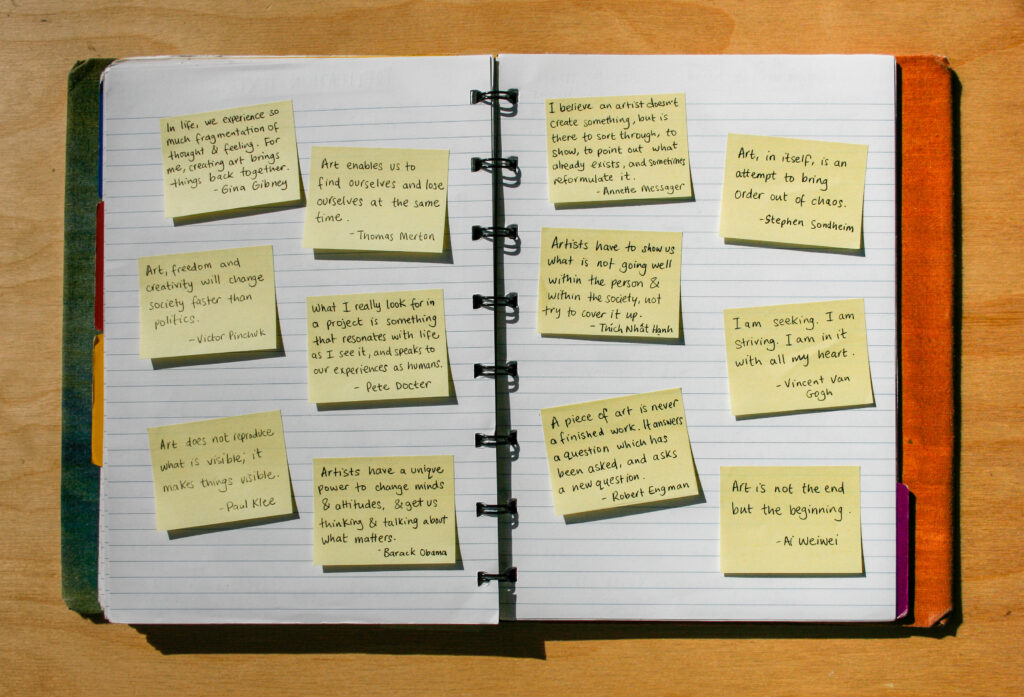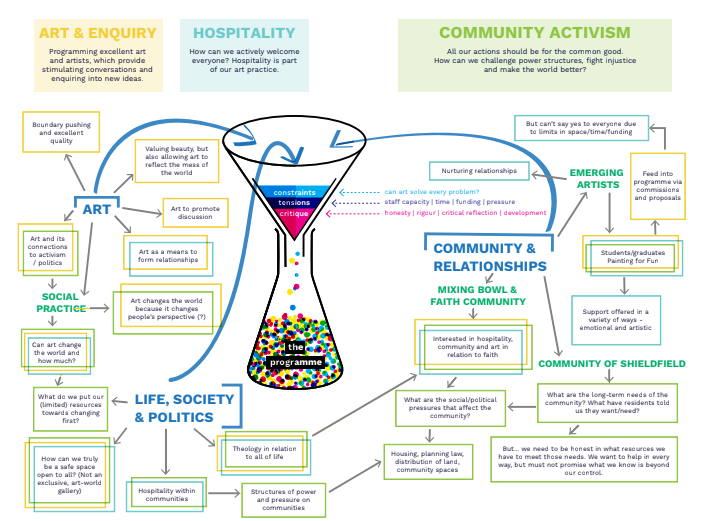In 2019 SAW released a publication. The publication was the outcome of many months of self reflection and careful consideration, within it’s pages we sought to explore and explain what SAW is, what it has been, and what it aims to be as an organisation. There are several essays within it that explore different aspects of our thinking and practise- here is one of them.
The development, exhibition and appreciation of art has been integral throughout the life of our organisation. When we identify ourselves as an art gallery on a tourist map or exhibition poster, there is a sense that visitors know what to expect (a room full of art, probably on white walls), and know what is expected of them (silence and reverence at the artwork). Although we have always been committed to showing excellent, boundary pushing contemporary art, we also seek to step away from the stereotypical silence of the ‘white cube’ gallery space. There is sometimes a need for quiet and reflection, but there is also place for discussion and enquiry. We have never seen our role as hanging exhibitions and then simply leaving visitors to muddle through incoherent art-speak text on the wall. Nor do we want to spoon feed answers or art clichés. Rather, we want to enquire into art and the world with and alongside others.

This enquiry is two fold; we encourage enquiry into art itself as a useful and rich activity, but we also affirm the use of art as a tool and means of enquiry into the world. Art has the power to ask questions, formulate ideas and point to the joy, complexity and brokenness in the world. We’re not alone in thinking this, as you can see from the quotes shown in the next few pages. Art enquires in a unique way, asking questions in subtle, humorous and confrontational ways. It can be a tool for self-expression, or a means of mass protest. Art is a unique and universal human expression, and at SAW we believe this becomes richer when matched with the human gifts of discernment and investigation. This does not mean we believe art for art’s sake is without merit, rather that over the last eight years we have determined the importance of placing art and enquiry together as partners, and that the richness of discussing art, and its connection to all of life, including community, politics and theology, should be of equal standing to the artwork itself.
Focussing to this degree on enquiry, poses a practical problem – how do we make enquiry a inclusive, open and fun activity, not the preserve of the art world, the academics or the well informed, but a space which includes everyone with equal voices? HOST, which was an investigation into hospitality during 2016 and is featured in the following pages, was a project which successfully involved a wide range of voices and experiences, whilst having an element of fun within an investigation into society’s boundaries of hospitality. HOST was also a watershed moment for our organisation, making a move towards a programme more invested in socially engaged practice and increased involvement with the local community. Social practice places more emphasis on the value of conversation, process and community direction over more traditional artistic outcomes. Social Practice is expansive, with crossovers in methods of protest, political thinking and social activism. It seeks to include, give equal voice and question structures of power. This inclusive and expansive practice looks beyond the white cube, and further into the community, into the world and enquires of it. SAW is still experimenting and growing in this practice, and still retains its interest in more traditional media, but after nine years of having art parallel to discussion and enquiry,social practice feels like a natural progression which retains art and ideas at the centre.

Gemma Herries




